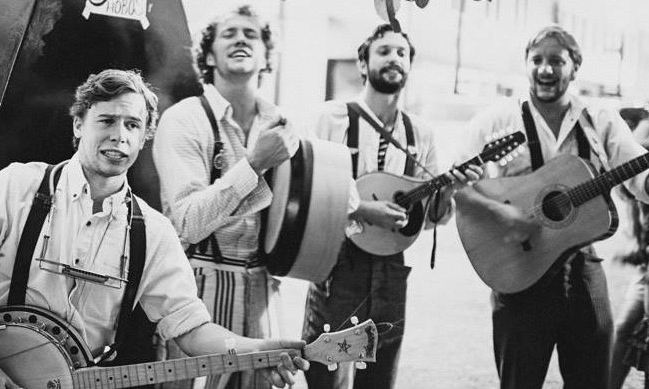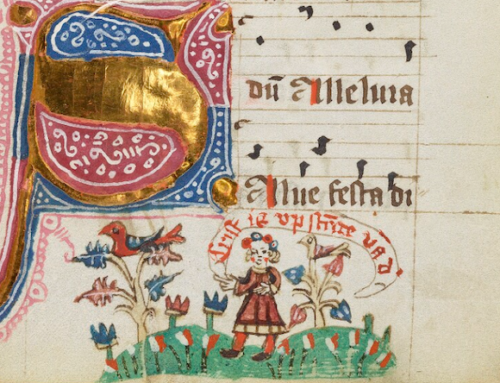Editor’s note: This is the ninth post in our newest series, reflecting on the Hillbilly Thomists’ recent, self-titled album. The series will run each Tuesday and Thursday throughout the Easter season. Read the whole series here. This post concerns the song “St. Anne’s Reel,” which you can listen to here.
“St. Anne’s Reel” preaches the Word without any words. How? In the same way that all good music does: by entering into a part of the human spirit that words cannot access and bringing it to life.
Music can describe reality. Every creature and experience could have its own theme and soundtrack. We have songs for love, songs for war, patriotic hymns and hymns of worship, songs of celebration and requiem masses, summertime songs and Christmas carols. There is music for every emotion and ideal, music that describes the whole world of nature, from Vivaldi’s Four Seasons to “Flight of the Bumblebee.”
Of course, the same is true of speech. For everything that exists, a name could describe it. Music and words point to the same things, but each moves according to its own unique dimension of reality, which means that music says something in a way that words simply can’t. The music of the Easter hymn Jesus Christ Is Risen Today describes the jubilant triumph of the Resurrection in a way that its lyrics cannot; Beethoven’s Moonlight Sonata expresses something of melancholy and romance that even Shakespeare’s sonnets are incapable of capturing; and a mother’s lullaby says “I love you” in a way that can’t be put into words. There’s something essentially inimitable to the way music speaks the truth. For tone moves on a different, more intuitive dimension than text.
Music often describes what’s hidden, unveiling the truth deep within things. Like a revelatory light, it pierces beyond the surface to illuminate a depth of meaning that we otherwise might not see.
There’s a charming scene in the film Begin Again, where the two lead characters, Dan and Gretta, are sitting on a sidewalk in New York City, listening to the song “As Time Goes By” and observing the normal things of city life: kids on bicycles, a couple holding hands, street-performers lounging after a performance—the whole evening rhythm of a New York sidewalk. As Dan and Gretta sit watching the scene unfold with the sweetness of the song surrounding them, new aspects of the things before them begin to emerge: the grace and fluidity of bicycles, the affection of lovers, the loneliness of the city—the song brings these hidden qualities more clearly into focus. Commenting on this effect, Dan makes a statement that’s (almost) very true: “That’s what I love about music. One of the most banal scenes is suddenly invested with so much meaning! All these banalities—they’re suddenly turned into these…these beautiful, effervescent pearls.”
Dan sums up a mystery of human experience: Things appear more beautiful through the lens of beautiful music. However (and this is what I think he gets wrong) good music doesn’t add or “invest” things with meaning; rather, it reveals the meaning that’s already present. This seems to be the intuitive logic behind bridal marches. A string quartet playing Jesu, Joy of Man’s Desiring doesn’t really make the bride more beautiful as she processes down the aisle. That is, the beautiful music doesn’t produce a beautiful change in the bride. But it does allow us to see her beauty more clearly; the music brings to light what’s already there: joy, honor, and grace.
Traditional folk music, like “St. Anne’s Reel,” has a special virtue for revealing the joys of friendship. Whether around the bonfire, the kitchen table, or the bar, folk music brings to life the camaraderie that binds friends together. (For a beautiful narrative about this almost magical quality of music, listen to “The Ballad of St. Anne’s Reel”). Good, true friendship is a privileged place for seeing the image of God. How can you love the God you cannot see if you do not love the brother whom you can see (1 Jn 4:20)? God reveals himself to us in the people we love, and folk music can help us to experience this revelation.
“St. Anne’s Reel” reveals the Word that is present by preaching a word of friendship, a word of life.
✠
Photo by The Stillwater Hobos







